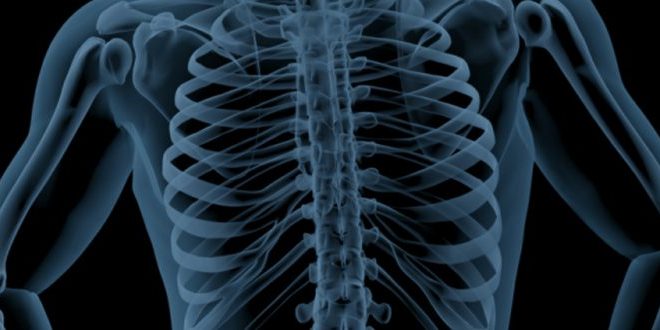The Science Behind Myofascial Release Therapy
Fascia is a dynamic connective tissue network that supports movement, posture, and nerve function—but it can become stiff, dehydrated, and bound by adhesions after injury, stress, or repetitive strain. Myofascial Release Therapy (MFR) uses sustained, precise pressure and movement to remodel collagen, restore tissue glide, and rehydrate the fascia. Beyond mechanical effects, MFR also calms protective muscle guarding and retrains neuromuscular communication, activating the parasympathetic system for deeper healing. Growing research shows MFR improves flexibility, reduces chronic pain, and enhances function in conditions like low back pain, fibromyalgia, and plantar fasciitis.

Myofascial Release Therapy (MFR) is often mistaken for just another form of massage—but it’s far more than relaxation. It’s a targeted, evidence-informed manual therapy that addresses a critical and frequently overlooked component of the body: the fascia. Unlike general bodywork, which may focus on surface-level muscle tension, myofascial release works at the deeper structural level to correct dysfunction, restore mobility, and reduce chronic pain by treating the connective tissue system itself.
In conventional healthcare and even many physical therapy settings, fascia is rarely given the attention it deserves. Yet this connective web influences everything from posture to muscle coordination to nerve sensitivity. When fascia becomes restricted—through injury, stress, surgery, or repetitive strain—it can cause widespread dysfunction that doesn't respond to traditional stretching or strengthening.
That’s why the scientific community is turning its focus toward fascia. Researchers are beginning to understand its role as not just structural, but also sensory and neurologically active. Studies now show how fascial restrictions can contribute to pain, limited range of motion, and even chronic inflammatory responses. As a result, myofascial therapy is gaining traction within integrative care models as a legitimate, science-backed intervention—not just an alternative.
How Fascia Becomes Dysfunctional
While fascia is designed to be strong, flexible, and adaptive, it can also become compromised—leading to dysfunction that affects your entire body. When fascia loses its natural elasticity and hydration, it begins to stiffen and bind down on the tissues it surrounds. This process is known as fascial restriction, and it's often the root cause of persistent pain, stiffness, and inefficient movement patterns.
What Is Fascial Restriction?
Fascial restriction occurs when the tissue becomes dehydrated, develops adhesions (areas where layers of fascia stick together abnormally), or forms scar tissue after trauma. In some cases, fascia becomes densified, meaning its collagen fibers thicken and lose mobility, limiting the tissue’s ability to glide and adapt to movement.
This restriction leads to a loss of flexibility, increased tension, and in many cases, pain that doesn’t respond to stretching or massage alone. Because fascia is so interconnected, dysfunction in one area can impact distant regions of the body.
Common Triggers That Lead to Fascial Dysfunction
- Repetitive Stress: Performing the same movement over and over—like running, lifting, or even sitting at a keyboard—can cause microtrauma and tightness in the fascial layers over time.
- Injury and Surgical Trauma: Whether it’s a sprain, car accident, or surgical incision, trauma creates an inflammatory response that leads to scar tissue formation. If left untreated, this scar tissue can harden and limit mobility for years.
- Poor Posture or Sedentary Lifestyle: Lack of movement is one of fascia’s worst enemies. When you sit for long hours or move in limited patterns, fascia begins to stiffen and lose hydration, especially in the neck, shoulders, hips, and back.
- Chronic Emotional Stress: Emotional tension shows up in the body. When you're stressed, your body may unconsciously brace or tighten muscles. Over time, this leads to widespread fascial restriction—particularly in the jaw, chest, abdomen, and spine.
What Happens When Fascia Gets Stuck?
Dysfunctional fascia can trigger a chain reaction of symptoms and compensations throughout the body, including:
- Restricted Movement: When fascia is tight, it limits the motion of the muscles and joints it surrounds, making every movement feel heavier, stiffer, or less coordinated.
- Altered Biomechanics: The body will compensate for restriction by shifting weight or muscle activation patterns. This leads to poor posture, inefficient movement, and increased wear and tear on joints.
- Compression of Nerves and Blood Vessels: Tight fascia can press on nearby structures, reducing blood flow and irritating nerves. This can result in numbness, tingling, or radiating pain.
- Chronic Pain and Inflammation: Fascial restriction often triggers low-grade inflammation and keeps the nervous system in a state of alert. This contributes to ongoing pain—even when no clear injury is present.
The Mechanisms of Myofascial Release
Myofascial Release (MFR) is more than just manual therapy—it’s a strategic, science-driven method that addresses the body’s connective tissue system at both the mechanical and neurological levels. Unlike traditional massage, which typically focuses on muscle relaxation through rhythmic strokes, MFR uses sustained, precise pressure to engage the fascia itself.
How MFR Differs from Massage
- Pressure Type: Massage tends to use flowing, dynamic strokes aimed at relaxation. MFR applies slow, static pressure to engage the fascia and allow it to release at a deep level.
- Depth & Intention: While massage may address general tension, MFR targets specific restrictions and adhesions with the goal of improving function and reducing chronic pain.
- Tissue Target: Massage works primarily on muscle tissue. MFR works through and around the muscle, affecting the fascial matrix that influences movement and pain sensitivity.
What Happens During a Myofascial Release?
Collagen Remodeling and Rehydration
Fascia is made of collagen fibers suspended in a gel-like ground substance. When it becomes dehydrated or inflamed, the tissue stiffens and loses glide. MFR stimulates fibroblasts, the cells responsible for rebuilding and realigning collagen, promoting a more pliable and functional tissue structure. At the same time, it encourages fluid exchange to rehydrate the fascia, improving mobility and reducing stiffness.
Fascia "Glide" Restoration
Healthy fascia allows muscles, joints, and nerves to move smoothly. With restriction, the layers get stuck or "glued" together. MFR helps restore interfascial glide—the sliding motion between tissue layers—which is essential for efficient, pain-free movement.
Shearing of Tissue Layers
By applying pressure in a specific direction, MFR creates a shearing effect, which helps break apart adhesions—areas where fascia has become too thick or bound down. This action is what releases those deep “knots” and restores elasticity.
Neurological Effects of Myofascial Release
Activation of the Parasympathetic Nervous System
The sustained, focused nature of MFR promotes a shift from the body’s fight-or-flight mode (sympathetic nervous system) into rest-and-digest mode (parasympathetic). This encourages deeper relaxation, healing, and pain relief.
Deactivation of Muscle Guarding
When fascia is restricted, the nervous system often responds by tightening surrounding muscles to protect the area—this is known as protective muscle guarding. MFR interrupts that loop by resetting tissue tension, allowing the muscles to let go and move more naturally.
Neuromuscular Reset via Proprioception
Fascia is rich in proprioceptors—sensory receptors that tell your brain where your body is in space. By stimulating these receptors, MFR can help retrain faulty movement patterns, improve body awareness, and restore functional coordination.
Research Supporting Myofascial Therapy
Clinical Evidence: What the Research Says
Improved Flexibility and Range of Motion
Multiple studies have shown that MFR significantly improves joint mobility and muscle flexibility. One study published in the Journal of Bodywork and Movement Therapies found that just a few sessions of MFR enhanced hamstring flexibility more effectively than static stretching alone. Similar findings are seen in shoulder, hip, and spinal mobility studies.
Reduction in Pain and Trigger Point Sensitivity
Patients suffering from myofascial pain syndrome, fibromyalgia, or chronic tension benefit from the therapy’s ability to desensitize trigger points and decrease overall pain perception. A systematic review in Frontiers in Physiology confirmed that MFR can reduce pressure pain thresholds and muscle tightness in targeted areas.
Positive Outcomes in Specific Conditions
- Chronic Low Back Pain: MFR has been shown to reduce lumbar stiffness and improve functional capacity in chronic back pain sufferers more effectively than some standard exercise-based interventions.
- Fibromyalgia: Patients report lower pain scores and improved sleep following regular MFR treatments, suggesting both mechanical and nervous system benefits.
- TMJ Dysfunction: Studies show reduced jaw tension and improved bite alignment with fascial release around the neck, jaw, and cranium.
- Plantar Fasciitis: MFR to the foot, calf, and posterior chain has led to improved weight-bearing tolerance and reduced morning pain.
The Future of Pain Relief Is Functional and Fascial
It’s time we start viewing chronic pain and movement limitations through a new lens—one that includes fascia. This dynamic, intelligent tissue system is far more than passive packing material. It plays an active role in how we move, how we feel, and how we recover. When fascia is restricted, the entire body pays the price. But when it’s released, everything starts to work better.
Myofascial Release Therapy (MFR) is a science-backed, hands-on approach that engages both the mechanical and neurological systems of the body. It’s not just about loosening tight tissue—it’s about restoring communication, balance, and function from the ground up. The research aligns with what so many of our patients experience: when fascia glides, muscles activate properly, pain fades, and mobility returns.
MFR isn’t just therapy. It’s tissue education, nervous system recalibration, and functional restoration all in one. Whether you’ve been chasing chronic pain with little success, or you’re trying to move better and perform at your best, this therapy may be the missing link.
📞 Call now: (864) 448-2073
📍 Visit us: 1901 Laurens Road, Suite E, Greenville, SC 29607
🌐 Learn more or book online: https://mountainmovementcenter.com
🗓️ Schedule your fascia-focused movement assessment and uncover the real reasons behind your pain or performance plateaus.
📲 Stay connected for mobility tips, education, and patient success stories:

We Treat the
Toughest Cases
We'd love to talk with you about yours. Ask us anything and we will get back to you with a detailed answer about your case.

.jpg)




